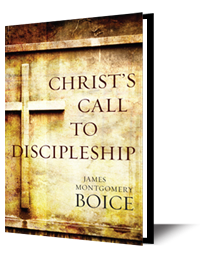The word for “transfigured” (v. 2) is used in 2 Corinthians 3:18 and Romans 12:2 to describe an inner transformation of the believer to Christ’s likeness. Here it seems to have to do more with Jesus’ outward visible appearance. If we turn to Exodus 34:29-30, we find something similar. In that passage Moses’ face is said to have shone so brightly that the people were unable to look at it and Moses had to cover his face with a veil when he was with them. But there is a major difference. Moses’ face shone because he was reflecting the glory of God, with whom he was speaking. By contrast, Jesus’ face shone because he was transfigured, which means that it was his own glory that was being made visible for the disciples’ benefit.
I said when I began these studies of Matthew 16 that, although this is one of the richest and most important chapters in the gospel, it is also one that seems to be a source of countless problems. Almost every sentence seems to have produced diverse interpretations among commentators. How is Peter the rock? What are the gates of Hades? What is the meaning of the keys? We do not escape problems even with the chapter’s last verse, for no one seems entirely sure What Jesus meant when he said, “I i you the truth, some who are standing here will not taste death before they see the Son Man coming in his kingdom” (v. 28). Here are four suggestions.
In today’s lesson we complete our composite picture begun in yesterday’s study, of what being a disciple is all about.
3. Following Jesus. Discipleship is not simply a door to be entered but a path to be followed, and the disciple proves the genuine nature of his discipleship by following the path to the end. David wrote about it in the 119th Psalm. The section of that psalm that begins, “Your word is a lamp to my feet and a light for my path” (v.105) ends, “My heart is set on keeping your decrees to the very end” (v. 112). That is it! The true disciple is one who follows Christ to the very end. In all, the words “follow me” occur thirteen times in the Gospels. There are many more instances in which a person is said to have followed Christ. It is a very basic concept.
How many important lessons can a person learn at one time? Not many, probably. But whatever the answer may be, on this occasion Jesus seized the moment and immediately went on to teach his disciples that not only must he go to the cross, there was a sense in which they must go to the cross, dying to themselves and their own plans, too. This was so important to Jesus that he repeated it again and again in his teaching, almost as often as he spoke about the necessity of his personal suffering.
The sharpness of Jesus’ rebuke was due to Jesus’ recognition that this was exactly the temptation Satan had made in the wilderness at the start of his ministry. It was a temptation to achieve worldly success without the cross. “All this [the kingdoms of the world and their splendor] I will give you, if you will bow down and worship me,” Satan said (Matt. 4:9). Jesus’ response was the same then as when he rebuked Peter: “Away from me, Satan!” (Matt. 4:10). He told Peter, “Get behind me, Satan!” (Matt. 16:23).


















